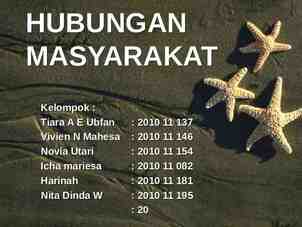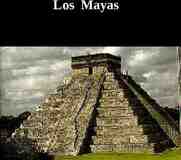Reaction Kinetics and Equilibrium How compounds react with each other
38 Slides931.00 KB
Reaction Kinetics and Equilibrium How compounds react with each other
Collision Theory A reaction is most likely to occur if reactant particles collide with the proper energy and orientation http://www.chem.iastate.edu/group/Greenbowe/sections/projectfolder/ animations/NO O3singlerxn.html
Reaction Rate Affecting Factors Nature of Reactants Concentration Surface Area Temperature Presence of a Catalyst Pressure for Gases
Nature of Reactants Factors that contribute to reaction rate: - Electronegativity - Ionization energy - Atomic Radius.
Bonding on Rate of Reaction Covalent bonds require more energy during collisions due to a greater number of bonds needed to be broken and reformed. Ionic Bonds are faster to react and require less energy during a collision.
Concentration We measure concentration by the number of moles there are in a L of solution (Molarity). More moles more collisions Ex: Burning paper. When the oxygen concentration is low the paper burns slowly. Raise the amount of oxygen the paper burns faster. http://www.coolschool.ca/lor/CH12/unit1/U01L01.htm
Surface Area The larger the surface area the easier it is to react because there are more chances for collision.
Temperature The average kinetic energy of molecules in a compound. The more molecules move the higher the temperature. Higher temperature results in more collisions
Presence of a Catalyst A substance whose presence increases the rate of a chemical reaction. Catalysts change (decrease) the activation energy which increases the rate of reaction
Activation Energy Activation energy is the minimum energy required to initiate a reaction. When particles collide with the right amount of activation energy it breaks the existing bond.
Energy Kinetic Energy (motion) – this the energy of work being done Potential Energy (static) – the potential for something to do work **Remember that there are many types of energy: - electrical - thermal - mechanical - electromagnetic - nuclear
Endothermic vs. Exothermic Reactions Exothermic (exit) reactions give off heat energy during a chemical reaction Endothermic (enter) reactions absorb heat energy during a chemical reaction http://schools.matter.org.uk/Content/Reactions/BondActivation.html
Potential Energy Diagram Used to show the energy released or stored in endothermic and exothermic reactions http://www.saskschools.ca/curr content/chem30/modules/module4/lesson4/ potentialenergydiagram.htm
Reading Energy Diagrams THE Y AXIS – Potential energy of the reaction THE X AXIS – Reaction as it takes place over time CURVE – Represents the potential energy at each step of a chemical reaction
Reading Energy Diagrams EXOTHERMIC REACTION – energy given off during a reaction LOOK AT THE CURVE AND SEE IF IT ENDS AT A LOWER VALUE The energy of the products is lower than the energy of the reactants
Reading Energy Diagrams ENDOTHERMIC – energy is absorbed during a reaction The energy of the products is higher than the heat of the reactants LOOK AT THE CURVE AND SEE IF IT ENDS AT A HIGHER VALUE ACTIVATION ENERGY – The amount of energy needed to reach the peak of the curve SUBSTRACT THE ENERGY AT THE PEAK OF THE CURVE FROM THE INITIAL ENERGY
Effect of a Catalyst of Activation Energy
Catalysts Continued A catalyst lowers the activation energy required for the reaction to occur. By lowering the activation energy, the chemical reaction can occur much more quickly.
Reversible Reactions Not all reactions go completely to completion (all reactants are used up) Instead, some reactions can occur both forward and reverse at the same time. A reversible reaction is symbolized by double arrows 2SO2(g) O2(g) 2SO3(g)
Equilibrium The rate at which the products are formed is at the same rate that the reactants are formed. Equilibrium is represented with a double arrow. Example:
Equilibrium
Entropy The measure of the randomness or disorder of a system’s energy. The greater the randomness the greater the entropy.
Entropy of Substances As a substance goes from solid to liquid to gas, entropy increases. Systems in nature tend to undergo changes toward low energy and high entropy (they want to lose energy and gain freedom)
Change of State (review) A change of state, also called a phase change, is the conversion of a substance from one of the 3 states of matter to another. A change of state always involves a change in energy.
Heating and Cooling Curves Animation Shows how a substance changes states at each temperature increase over time.
Phase Diagram
Equilibrium Review Some chemical reactions are reversible When a reaction is occurring both forward and reverse at the same rate, equilibrium is reached Example: N2 3 H 2 2 NH3 energy
Le Chatlier’s Vide o Principle When a system at equilibrium is subjected to a stress (a change in concentration, temperature, or pressure), the equilibrium will shift in the direction that tends to counteract the effect of the stress.
Le Chatlier’s Principle Example: N2 3 H2 2 NH3 energy If the concentration of Nitrogen is increased, the reaction will shift to the right and favor the products side, making more ammonia and giving off more heat.
Le Chatlier Example: N2 3 H 2 2 NH3 energy If the temperature is increased, the reaction will shift to the left and favor the reactants side, making more N and H
Effect of Pressure on Equilibrium Example: N2 3 H 2 2 NH3 energy (4 moles gas) (2 moles gas) If the pressure is increased, the reaction will shift to the right, favoring the side with the lower number of moles of gas
Heat and Temperature Heat (J or calories) – a transfer of energy from a body of higher temperature to a body of lower temperature. Thermal energy is associated with the random motion of atoms and molecules. Ex) steam v water Temperature – a measure of the average kinetic energy of the particles of a substance. Temperature is not a form of energy. Question: What state of matter has the most energy? GAS
Heat Calculations Specific Heat Capacity – the amount of energy required to raise the temperature of a substance one degree. Ex: Takes more energy to heat a swimming pool than a cup of water Specific heat Capacity of H2O (l) 4.18 J/g X C
Calculations con Fusion – melting Heat of Fusion – the amount of heat needed to convert unit mass of a substance from a solid to a liquid at constant temperature. - when ice is melting the kinetic energy stays the same Heat of Fusion of H2O 334 J/g
Calculations con Heat of Vaporization – the amount of heat needed to convert a unit mass of a substance from a liquid to a gas at constant temperature. - when ice is boiling the kinetic energy stays the same Heat of V of H2O 2260 J/g TABLE B in Reference Table
Calculations con. Q mC T Q mHf Q mHv
Vapor Pressure In every liquid, some particles are far enough away from each other to be considered gas but are pushed down by atmospheric pressure. When in liquid, some particles are far enough apart to escape their neighboring molecules and enter the gas phase (vapor). As temperature increases, particles gain more energy and more particles escape from the surface. The pressure these gaseous particles exert is called vapor pressure. As temp increases, vapor pressure increases.
Vapor Pressure con. Vapor pressure eventually builds up enough to equal atmospheric pressure. When it surpasses atmospheric pressure, the liquid boils and allows the gaseous particles to escape. Vapor Pressure – pressure gaseous particles exert upward











































